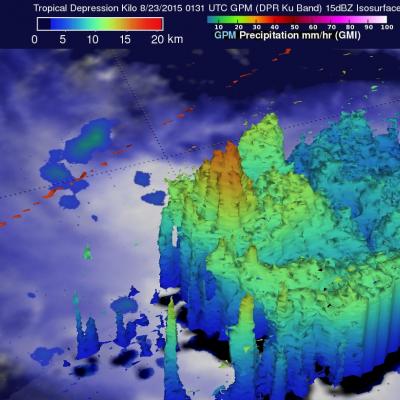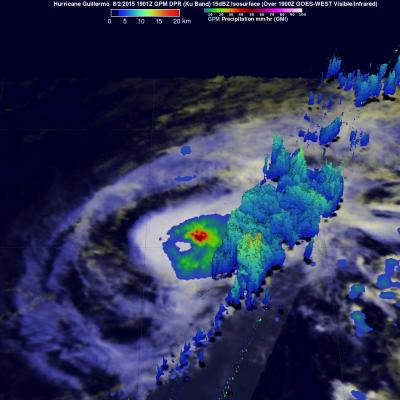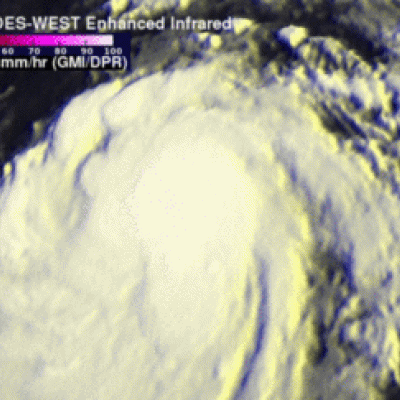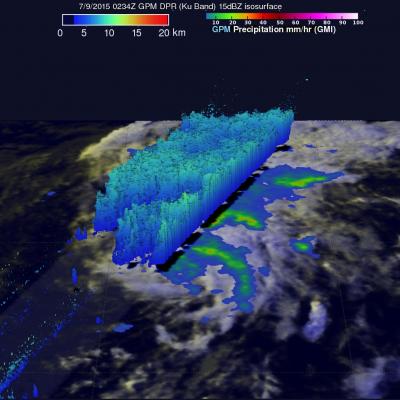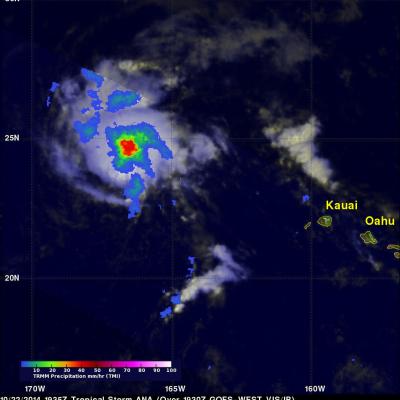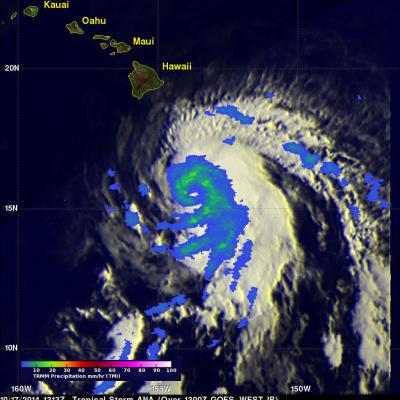Tropical Depression Kilo May Be A Problem For Hawaii
A tropical depression labeled Kilo formed to the southeast of the Hawaiian Islands on August 20, 2015. The tropical cyclone has moved to the southwest of the Islands. The Central Pacific Hurricane Center (CPHC) predicts that Kilo will strengthen into a hurricane as it moves in the general direction of the island of Kauai over the next five days. The GPM core observatory satellite measured the rainfall near Kilo on August 23, 2015 at 0131 UTC. GPM’s Microwave Imager (GMI) and GPM's Dual-Frequency Precipitation Radar (DPR) discovered that rain was falling at a rate of over 121 mm (4.8 inches)


